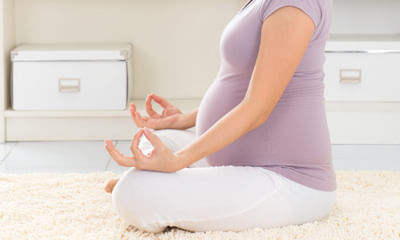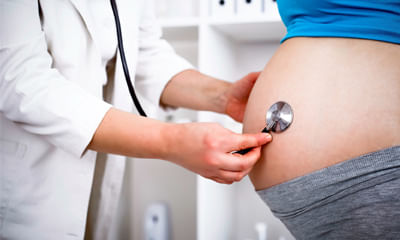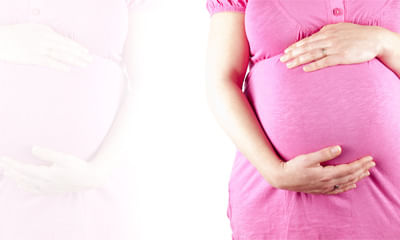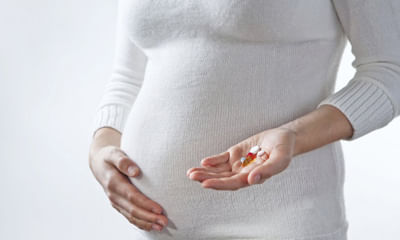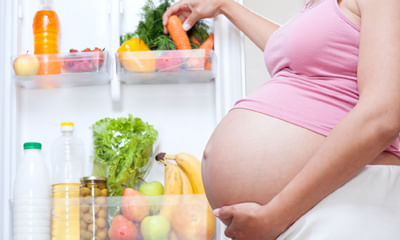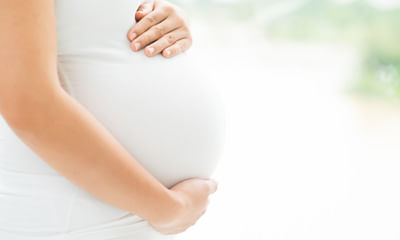Rubella In Pregnancy Treatment
Rubella igg test result is 165 ml during pregnancy. What precautions or treatment? ...
Ask Free Question
Nothing to be done. This means that you had Rubella earlier in life which is good so that you are not going to get during pregnancy
Hi I was 4 weeks pregnant and then had a miscarriage last month now my Dr. had asked me to go to torch test and below ar ...
Ask Free Question
Hello lybrate-user. Yes it can cause deformity in child. Better try for next pregnancy after proper treatment only.
My baby died in the womb with the rubella virus in the 8th month of pregnancy. The doctor said this virus is not active ...
Ask Free Question
It can be detected by the blood test. You should think of taking proper treatment. You can consult me at Lybrate for homoeopathic treatment.
Namaskar doctor. This query is about my younger sister. She is married. It is her two years of marriage. Before one year ...
Ask Free Question
It’s best to get vaccinated against rubella before you get pregnant to protect your baby. You should wait at least 4 weeks after getting the vaccine to become pregnant. If you’re already pregnant, you shouldn’t get the vaccine.
I'm 30 years old. In 2017 I lost my first child cause of low placenta and many other health issues like bleeding at anyt ...
Ask Free Question
You should have pregnancy as soon as possible, but to have a healthy one, you and your husband should get a proper prenatal examination and treatment. Meanwhile, you can take Ayurvedic treatment for endometriosis.
Hi, What are symptoms of rubella virus? I want to know please describe in detail? Treatment and prognosis? ...
Ask Free Question
Mild fever, sore throat, typical lesion on soft palate, rashes on body, may be associated other complaints like earache, lymph nodes enlarged in some case. No specific treatment- depends on symptoms Few get secondary complication like infection, majority sail through well more so in children. During pregnancy more complications. Can be prevented by earlier vaccination
What cause abnormal babies development in mother womb and in which month it can be known during pregnancy. ...
Ask Free Question
An estimated 303 000 newborns die within 4 weeks of birth every year, worldwide, due to congenital anomalies. Congenital anomalies can contribute to long-term disability, which may have significant impacts on individuals, families, health-care systems, and societies. The most common, severe congenital anomalies are heart defects, neural tube defects and Down syndrome. Although congenital anomalies may be the result of one or more genetic, infectious, nutritional or environmental factors, it is often difficult to identify the exact causes. Some congenital anomalies can be prevented. Vaccination, adequate intake of folic acid or iodine through fortification of staple foods or supplementation, and adequate antenatal care are just 3 examples of prevention methods. Causes and risk factors Although approximately 50% of all congenital anomalies cannot be linked to a specific cause, there are some known genetic, environmental and other causes or risk factors. Genetic factors Genes play an important role in many congenital anomalies. This might be through inherited genes that code for an anomaly, or resulting from sudden changes in genes known as mutations. Consanguinity (when parents are related by blood) also increases the prevalence of rare genetic congenital anomalies and nearly doubles the risk for neonatal and childhood death, intellectual disability and other anomalies. Some ethnic communities (such as Ashkenazi Jews or Finns) have a comparatively high prevalence of rare genetic mutations such as Cystic Fibrosis and Haemophilia C. Socioeconomic and demographic factors Low-income may be an indirect determinant of congenital anomalies, with a higher frequency among resource-constrained families and countries. It is estimated that about 94% of severe congenital anomalies occur in low- and middle-income countries. An indirect determinant, this higher risk relates to a possible lack of access to sufficient, nutritious foods by pregnant women, an increased exposure to agents or factors such as infection and alcohol, or poorer access to healthcare and screening. Factors often associated with lower-income may induce or increase the incidence of abnormal prenatal development. Maternal age is also a risk factor for abnormal intrauterine fetal development. Advanced maternal age increases the risk of chromosomal abnormalities, including Down syndrome. Environmental factors Maternal exposure to certain pesticides and other chemicals, as well as certain medications, alcohol, tobacco and radiation during pregnancy, may increase the risk of having a fetus or neonate affected by congenital anomalies. Working or living near, or in, waste sites, smelters or mines may also be a risk factor, particularly if the mother is exposed to other environmental risk factors or nutritional deficiencies. Infections Maternal infections such as syphilis and rubella are a significant cause of congenital anomalies in low- and middle-income countries. More recently, the effect of in utero exposure to Zika virus on the developing fetus has been reported. In 2015, Brazil detected cases of Zika virus and a spatio-temporally associated increase in microcephaly. By 2016, Brazil reported that of 4180 suspected cases of microcephaly, 270 were confirmed, 462 were discarded and 3448 are still under investigation. This is compared to an average of 163 microcephaly cases recorded nationwide per year. With 6 of the 270 confirmed cases of microcephaly showing evidence of Zika infection, health authorities and agencies are investigating and conducting comprehensive research to confirm a causal link. Following the Zika outbreak in French Polynesia, health authorities reported an unusual increase in the number of congenital malformations in babies born between March 2014 and May 2015. Maternal nutritional status Maternal folate insufficiency increases the risk of having a baby with a neural tube defect while excessive vitamin A intake may affect the normal development of an embryo or fetus. Detection Health care before and around the time of conception (preconception and peri-conception) includes basic reproductive health practices, as well as medical genetic screening and counselling. Screening can be conducted during the 3 periods listed: Preconception screening can be useful to identify those at risk for specific disorders or at risk of passing a disorder onto their children. Screening includes obtaining family histories and carrier screening, and is particularly valuable in countries where consanguineous marriage is common. Peri-conception screening: maternal characteristics may increase risk, and screening results should be used to offer appropriate care, according to risk. This may include screening for young or advanced maternal age, as well as screening for use of alcohol, tobacco or other risks. Ultrasound can be used to screen for Down syndrome and major structural abnormalities during the first trimester, and for severe fetal anomalies during the second trimester. Maternal blood can be screened for placental markers to aid in prediction of risk of chromosomal abnormalities or neural tube defects, or for free fetal DNA to screen for many chromosomal abnormalities. Diagnostic tests such as chorionic villus sampling and amniocentesis can be used to diagnose chromosomal abnormalities and infections in women at high risk. Neonatal screening includes clinical examination and screening for disorders of the blood, metabolism and hormone production. Screening for deafness and heart defects, as well as early detection of congenital anomalies, can facilitate life-saving treatments and prevent progression towards some physical, intellectual, visual, or auditory disabilities. In some countries, babies are routinely screened for abnormalities of the thyroid or adrenal glands before discharge from the maternity unit.
Hello doctor. Rubella kitne time m thik hota h or ye thik hone ke baad dubara to nhi ho jata na or rubella virus thik ho ...
Ask Free Question
Ji thik ho jata he.. Aur Uske 6 months bad conceive kare... Homoeopathic treatment bhi Suru kare Sath Sarah for healthy pregnancy..
Hello Dr, Meri shadi ko 3 year ho gye he. October 17 me mere miscarriage hua tha. That time I was 3 month pregnant And m ...
Ask Free Question
I also agree with your second doctor. U will have to continue with tab thyrox and letrozole for ovulation. Follow her advice and in short time you will become pregnant again. Don’t worry.
Hii doc. I had DNC before 12 days. My pregnancy was of 10 weeks. Now I get rubella tests. Rubella igg is positive 3.01 a ...
Ask Free Question
Rubella is a viral infection ,no treatment is required ,it will be cured by itself. You don't need rubella vaccination as you have already developed immunity against it (igG+ve). Repeat rubella igm after 3-6 months ,Plan Pregnancy once igm is -ve.

